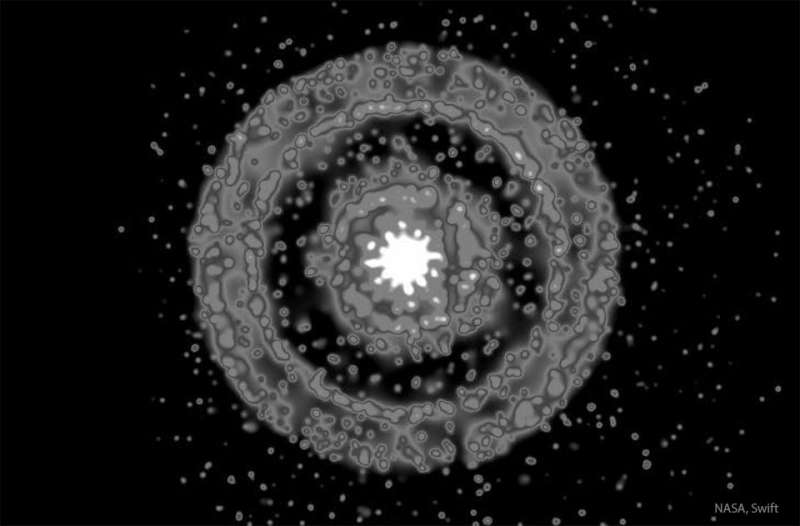
|
Credit & Copyright: NASA
Swift Obs.;
Data: B. Cenko
(NASA's GSFC),
A. Beardmore
(U. Leicester) et al.;
Processing: J. Miller
(U. Michigan)
Explanation:
Why would x-ray rings appear around a gamma-ray burst?
The surprising answer has little to do with the explosion
itself but rather with light reflected off areas of
dust-laden gas in our own
Milky Way Galaxy.
GRB 221009A
was a tremendous explosion -- a very bright
gamma-ray burst (GRB) that occurred
far across the universe
with radiation just arriving in
our Solar System last week.
Since GRBs
can also emit copious amounts of
x-rays,
a bright flash of x-rays arrived nearly simultaneously with the
gamma-radiation.
In this case,
the X-rays also bounced off regions high in dust right here in our
Milky Way Galaxy,
creating the
unusual reflections.
The greater the
angle
between reflecting
Milky Way dust and the GRB, the greater the radius of the
X-ray rings, and, typically, the longer it takes for
these
light-echoes to arrive.
|
January February March April May June July August September October November December |
| |||||||||||||||||||||||||||||||||||||||||||||||||||||||
NASA Web Site Statements, Warnings, and Disclaimers
NASA Official: Jay Norris. Specific rights apply.
A service of: LHEA at NASA / GSFC
& Michigan Tech. U.
Based on Astronomy Picture
Of the Day
Publications with keywords: GRB
Publications with words: GRB
See also:
